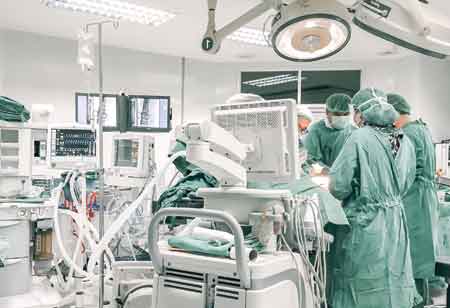Thank you for Subscribing to Healthcare Business Review Weekly Brief

A Quaternary-Care Children's Hospital Thriving Through Partnerships With Community Hospitals
Healthcare Business Review
Thriving in the healthcare industry in the current economic climate is challenging. It is even more challenging for a new, free-standing children’s hospital to grow and thrive today. Nemours Children’s Hospital, Florida (NCH-FL) was opened to the public in October 2012 in Orlando, Florida. There were already two other healthcare facilities offering subspecialty children’s care in Orlando at the time. However, there was a need identified and approved by the state of Florida to open a new children’s hospital on the southeast side of Orlando, an area also known as Lake Nona. Although there were Nemours pediatric subspecialists practicing in the Orlando area for over ten years prior to opening, the inpatient volume of Nemours Children’s Hospital during the first year was extremely low. The average inpatient daily census (ADC) was 22, and the neonatal intensive care unit (NICU) ADC was 1.7 in 2013.
Prior to opening day, the strategic planning and business development department at NCH-FL met with community hospital leaders to build partnerships. The offer was to provide Nemours physicians and/or advanced practice providers to see patients at their local hospital to elevate the quality of newborn, neonatal, and/or pediatric inpatient care to keep as many infants and children as possible in their own community hospital. Depending on the location of the partner hospital and the type of coverage offered, providers were encouraged to live locally to improve response time, decrease commute time, and increase community engagement.
There are currently ten community hospital partners with NCH-FL providers admitting and supporting children in a general pediatric unit, pediatric intensive care unit, and/ or Level II and III NICUs. These units are covered 24 hours a day and 7 days a week. In-house coverage is only offered at partner hospitals with units with a large patient volume and/ or high acuity. Signage of our presence at these community hospitals increases our exposure to the local population.
Each partner has a different model of care. Our smaller partner hospitals have pediatric hospitalists seeing healthy newborns in the nursery or neonatologists and neonatal nurse practitioners treating premature and sick newborns in Level II and/or III NICUs. Our largest community partner hospital has pediatric hospitalists and intensivists managing patients in their respective inpatient units and some pediatric subspecialists providing outpatient and inpatient services. General and orthopedic surgeons operate and co-manage the inpatients they treat locally at our largest community partner hospital.
Both organizations in the partnership must be committed to investing in the partnership’s success. Ancillary personnel, equipment, supplies, and appropriately trained staff are some of the essential investments the community hospital needs.
The appropriate number and type of providers, physicians, and advanced practice providers for the specific clinical care model must be supported to ensure high-quality, safe pediatric care. Subspecialists at the tertiary/quaternary hospital must be willing to provide recommendations remotely 24/7/365.
The benefits of these partnerships are apparent. The number of children admitted for tertiary/quaternary care to NCH-FL from these community partner hospitals has grown exponentially in a brief time (see figure). In 2023, our inpatient ADC had grown to 79.6, and our NICU ADC had grown to 19.5.
The case-mix index has also increased due to less acutely ill children being treated locally. Although the average case mix index (CMI) for all the inpatients grew from 1.56 to 1.99 from 2014 to 2023, the average CMI for the patients referred from the partnership hospitals grew from 1.95 to 3.52 over the same time. Because there is no obstetrical service line in the children’s hospital, the NICU at NCH-FL relies entirely on transfers from community hospitals. In fact, 84% of neonates admitted to the NICU are referred by our community hospital partners.
Nemours’ overarching goal is to serve as many of the 4.2 million children in Florida as possible. Nemours is willing to invest to keep care in the local community where appropriate through their partnership relationships while transferring to a higher level when tertiary and quaternary care is needed. Through these mutually beneficial partnerships, Nemours has further developed specialty care programs to meet the needs of the sickest children and has set itself apart from other systems by treating patients locally and returning children to their communities once their acute care needs have been met.
Building successful community hospital partnerships takes time, hard work, financial investment, and personal commitment. If done right, community partnerships create a win-win for both institutions. Keeping sick infants and children in their local community hospital by providing highquality pediatric care is good for medicine and society.









